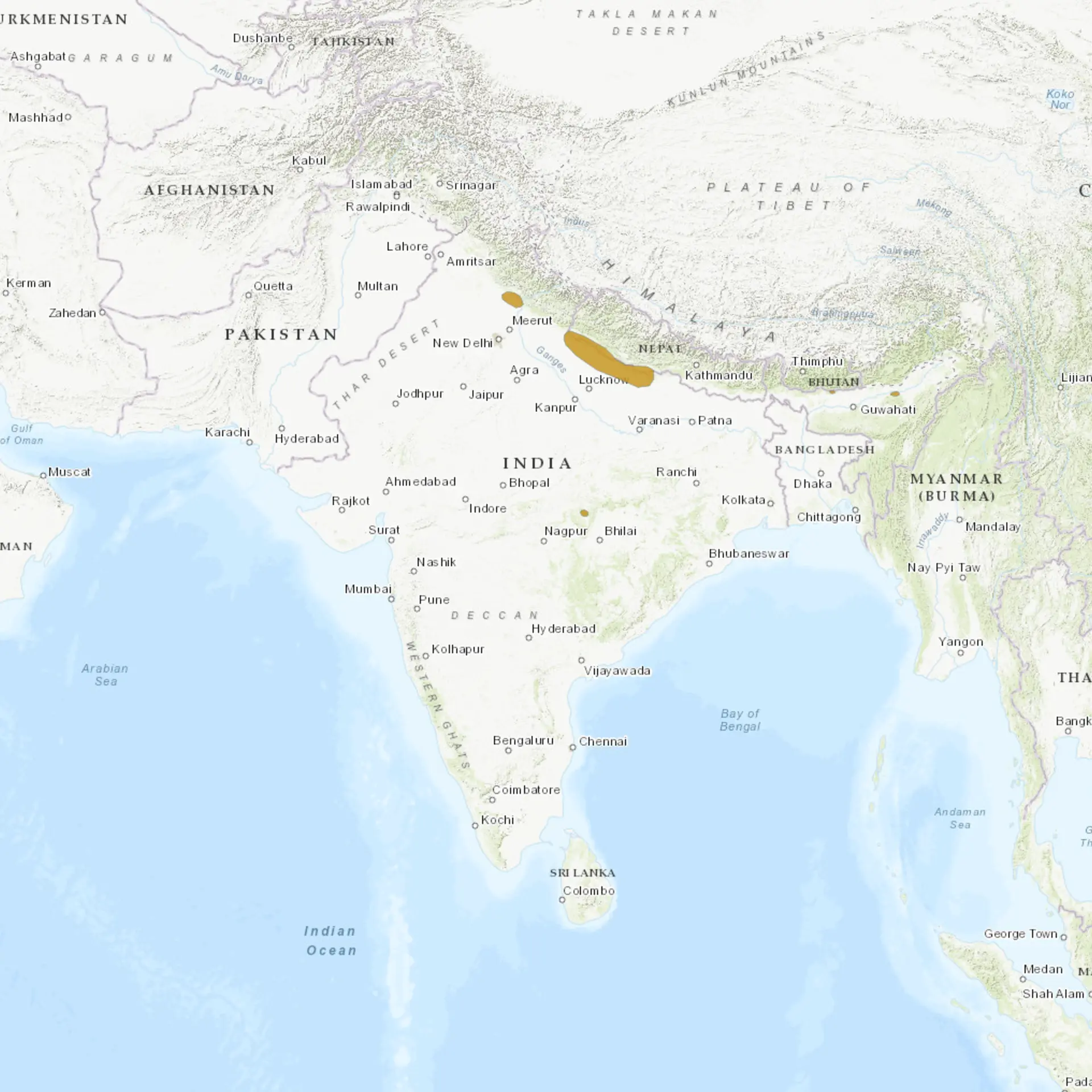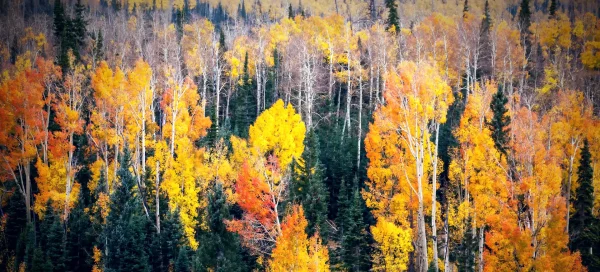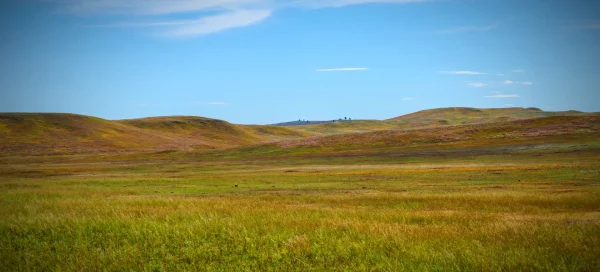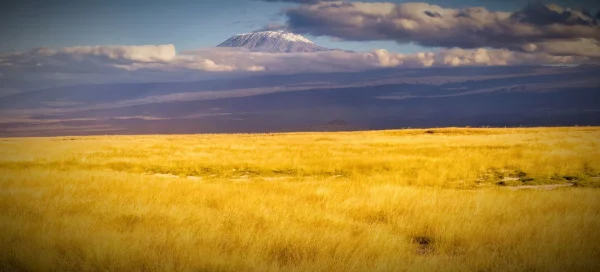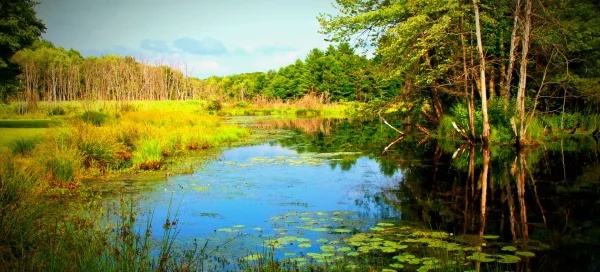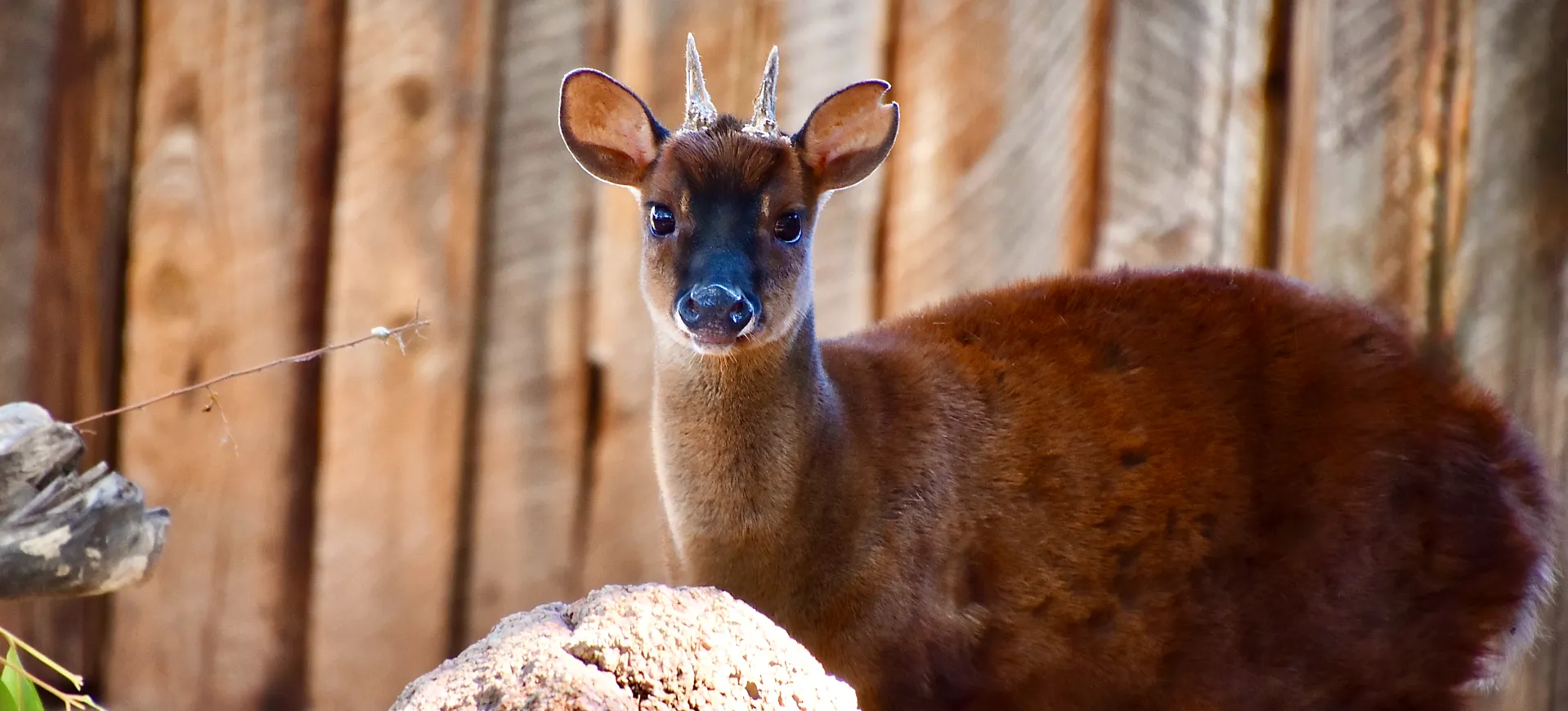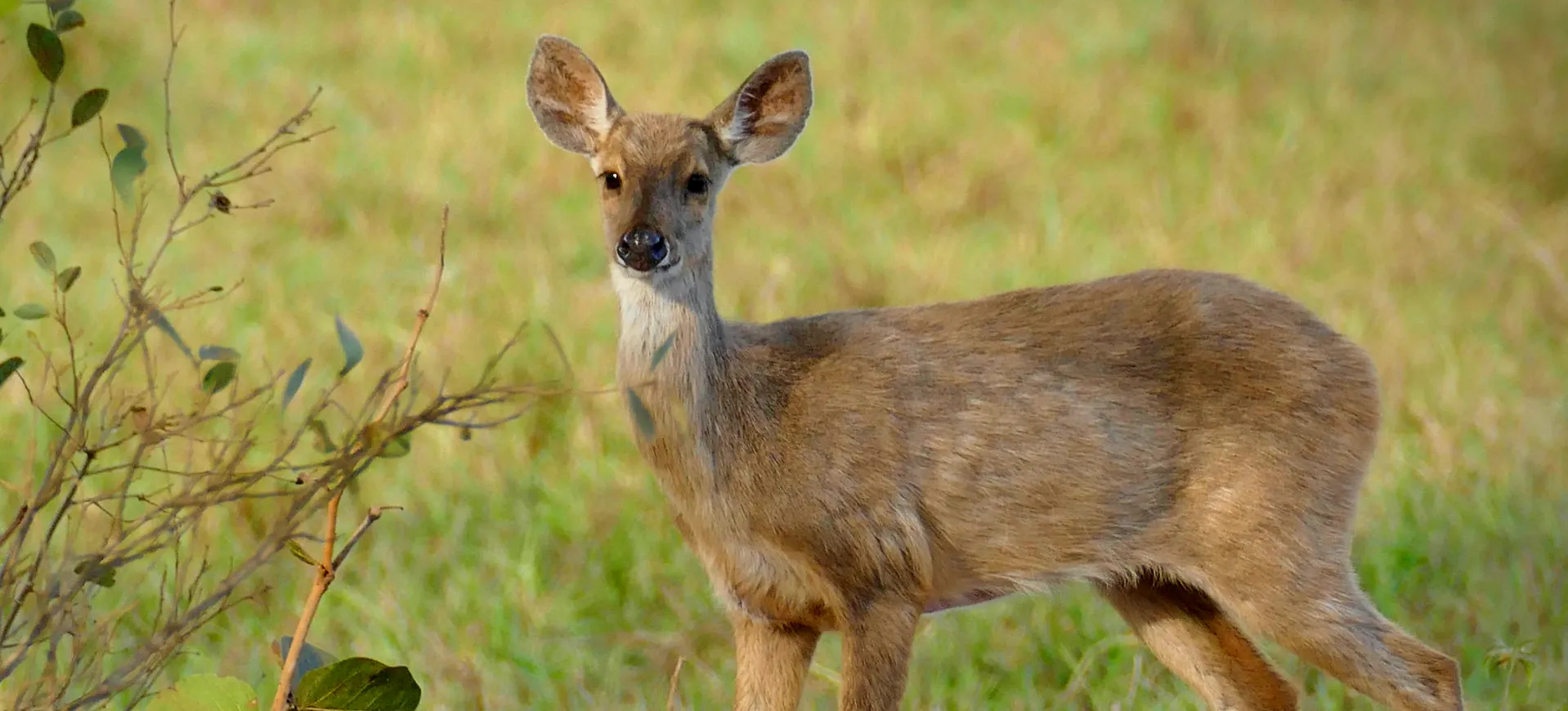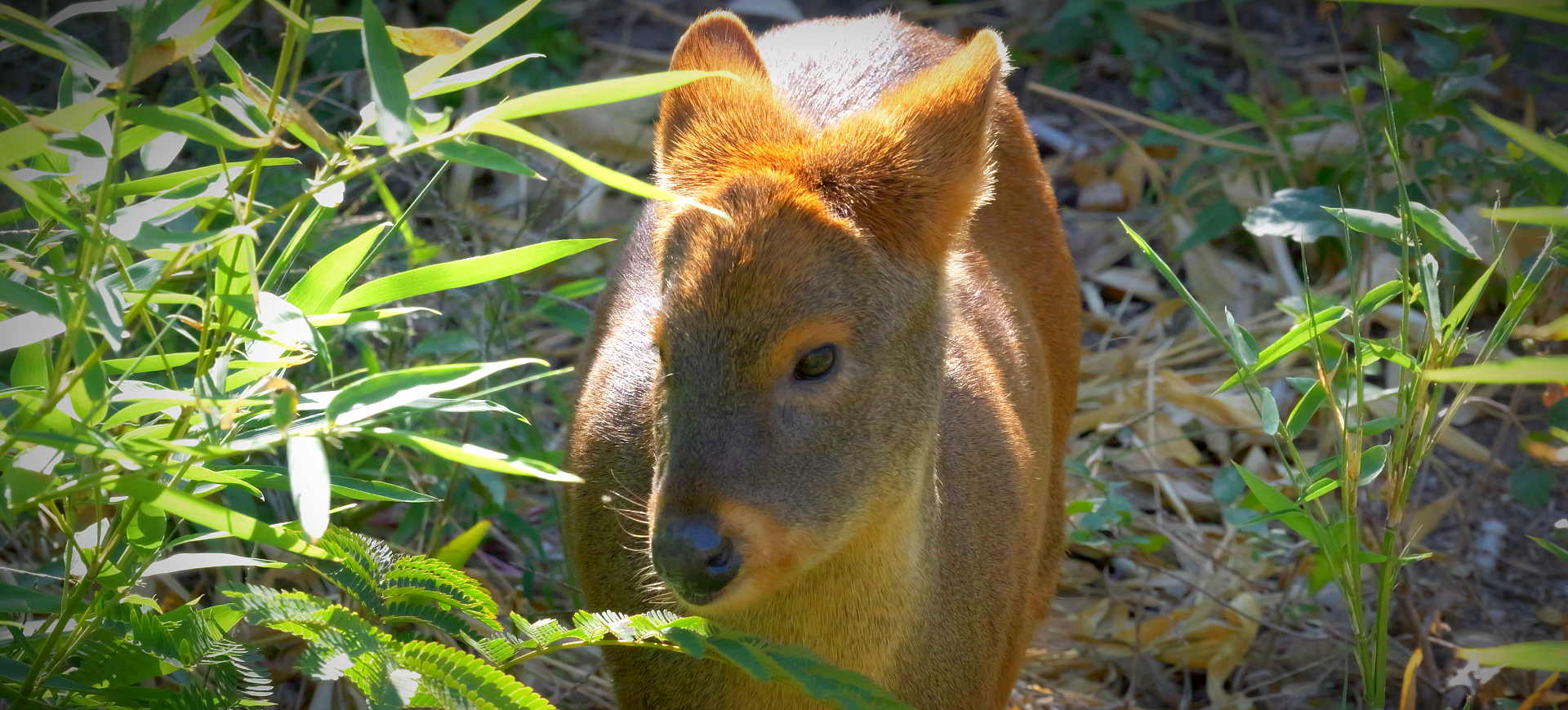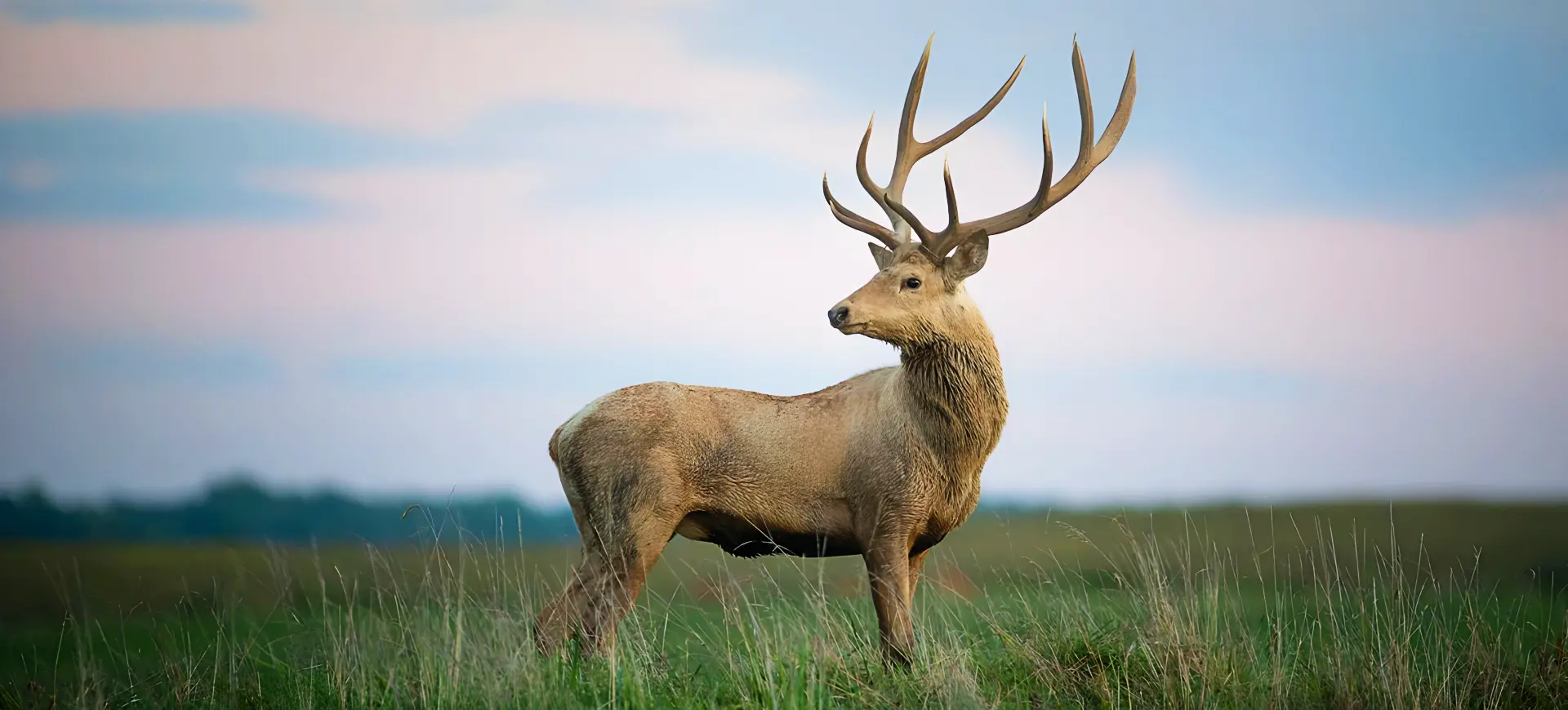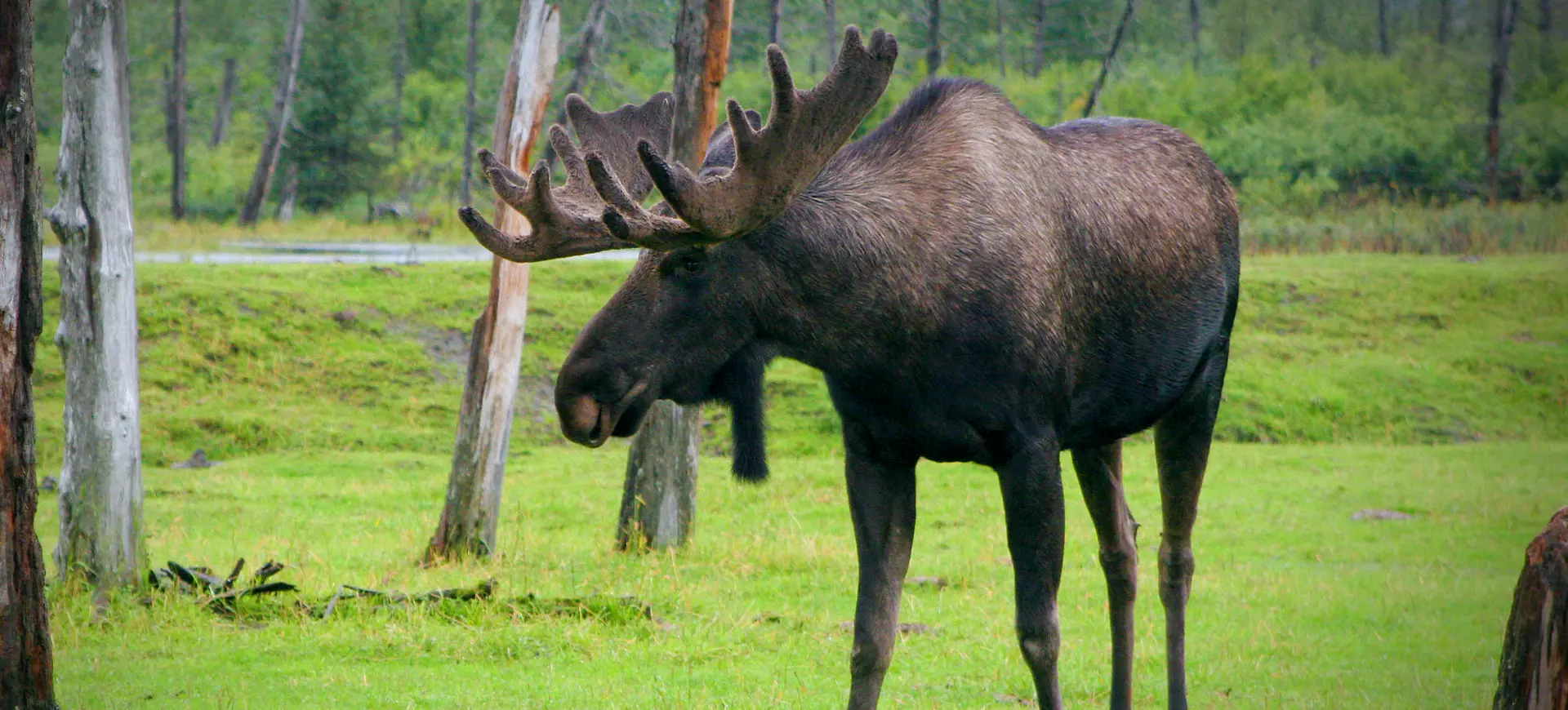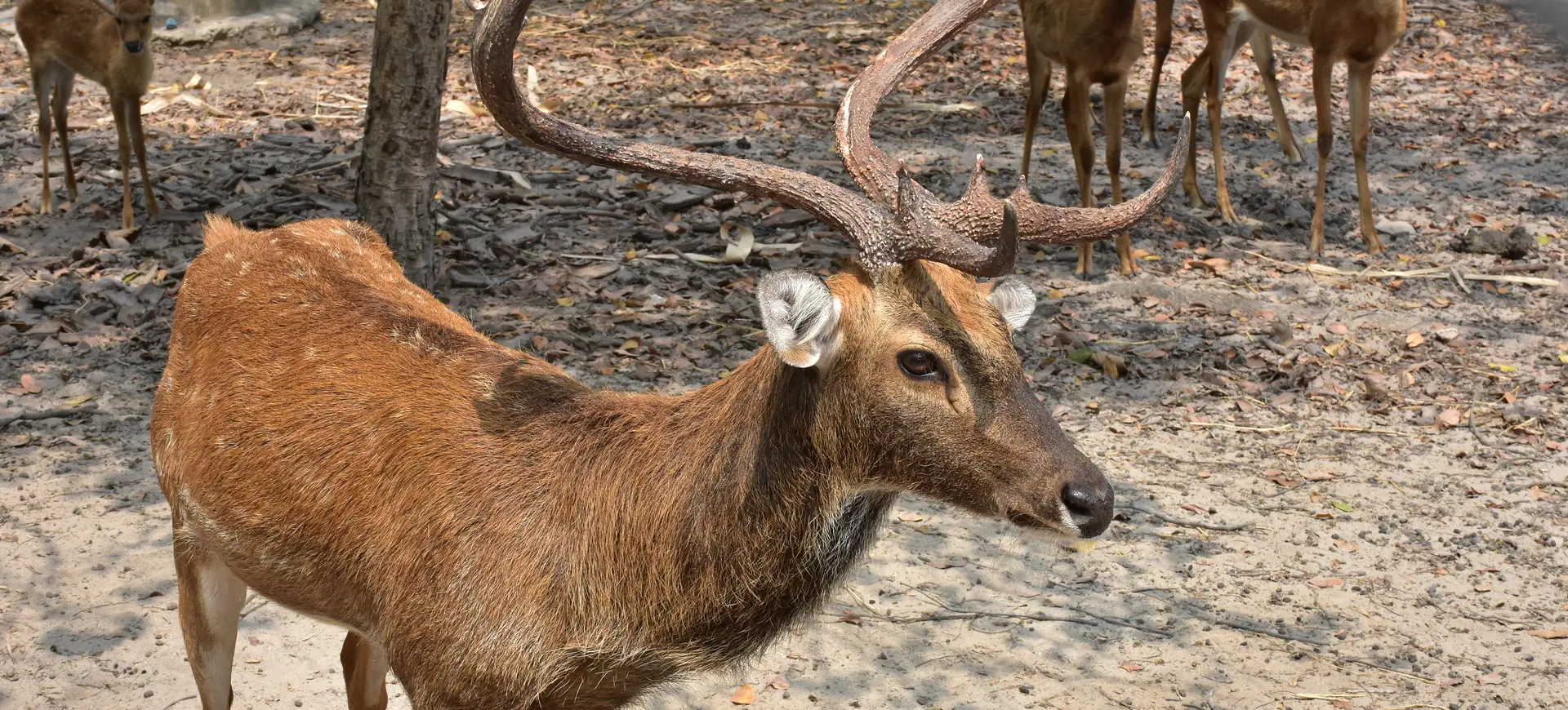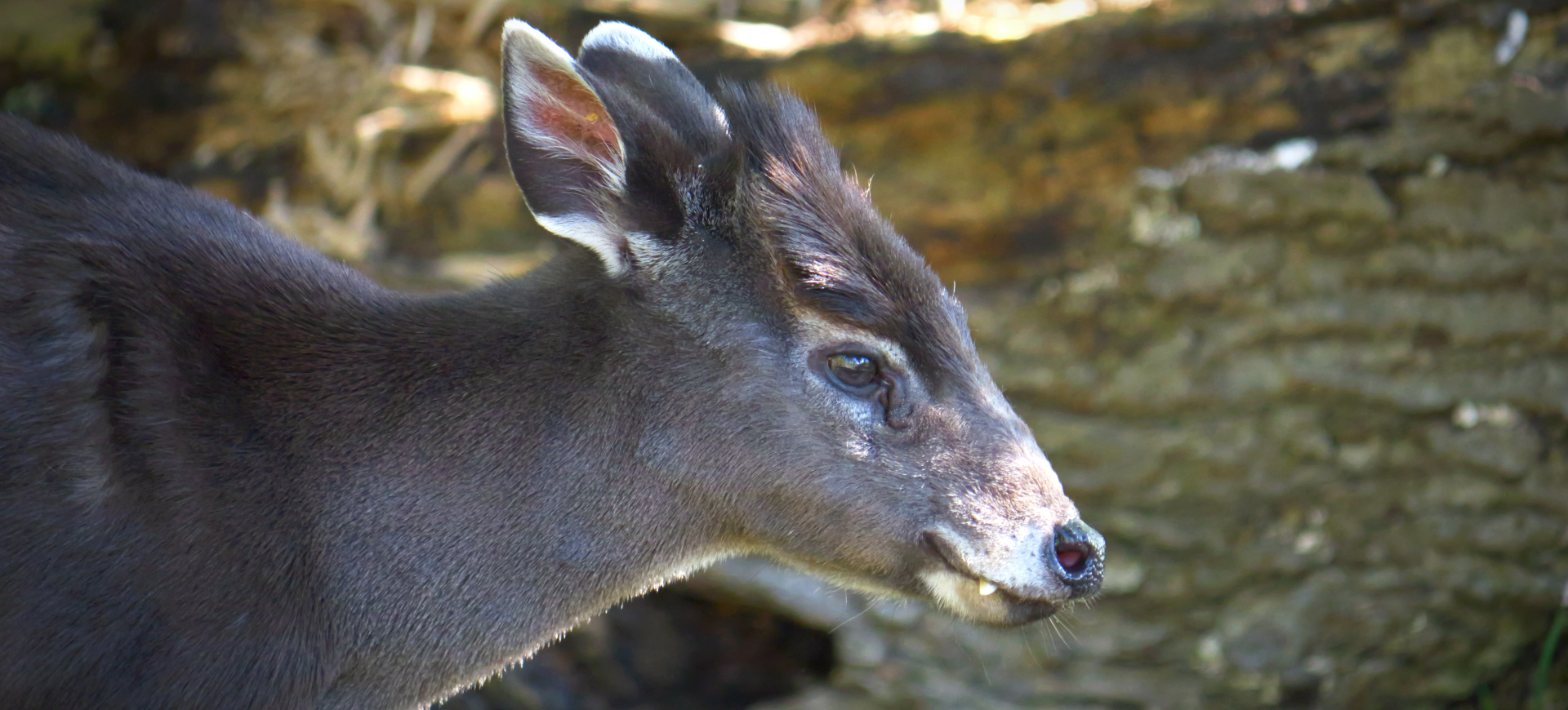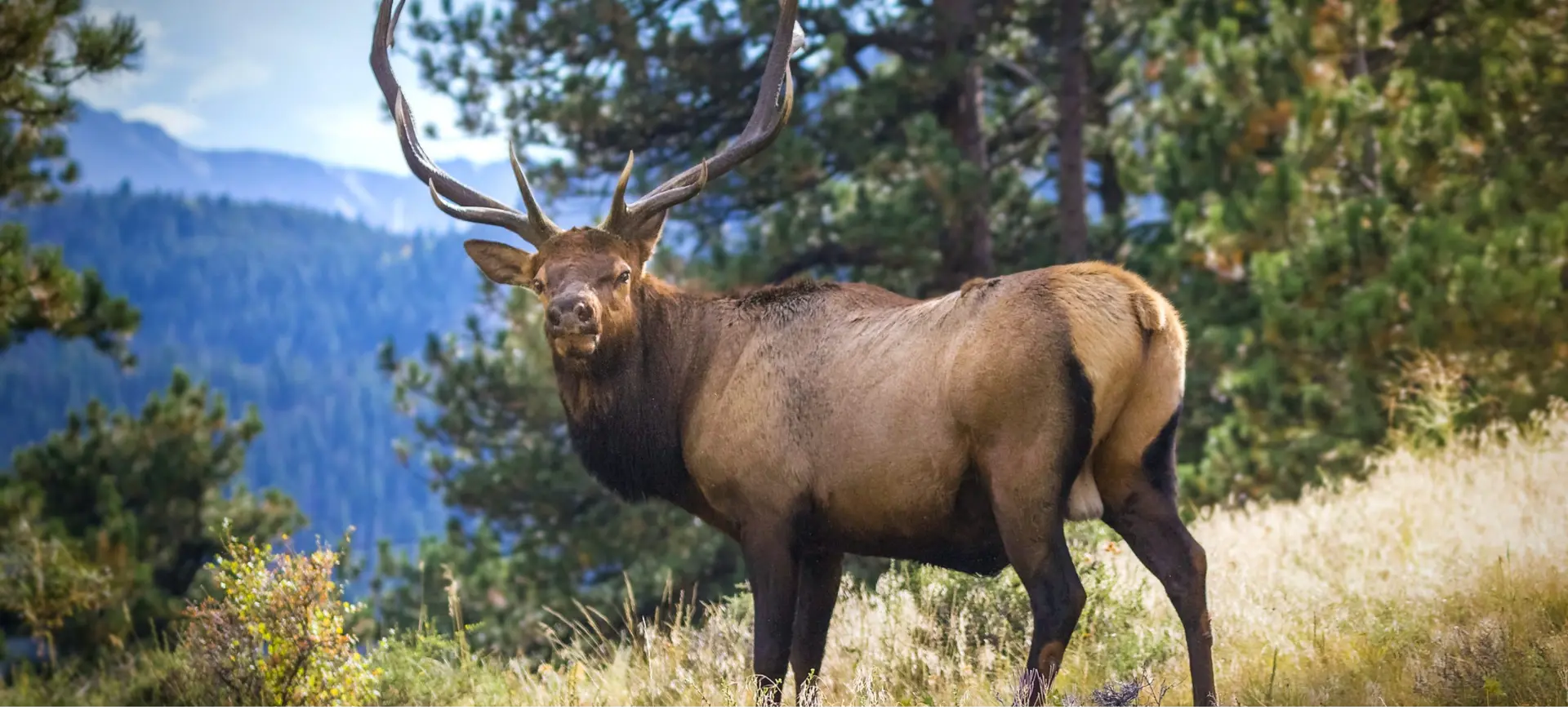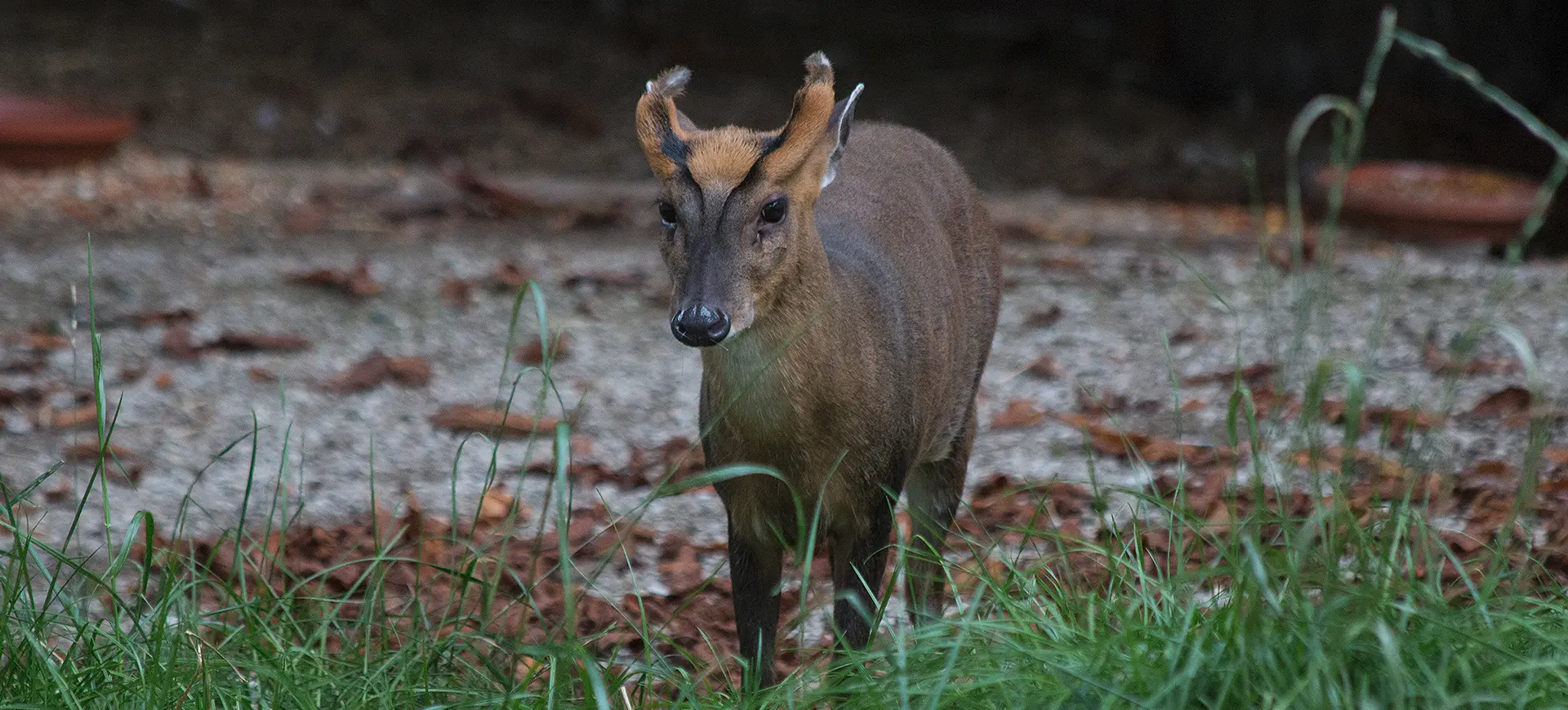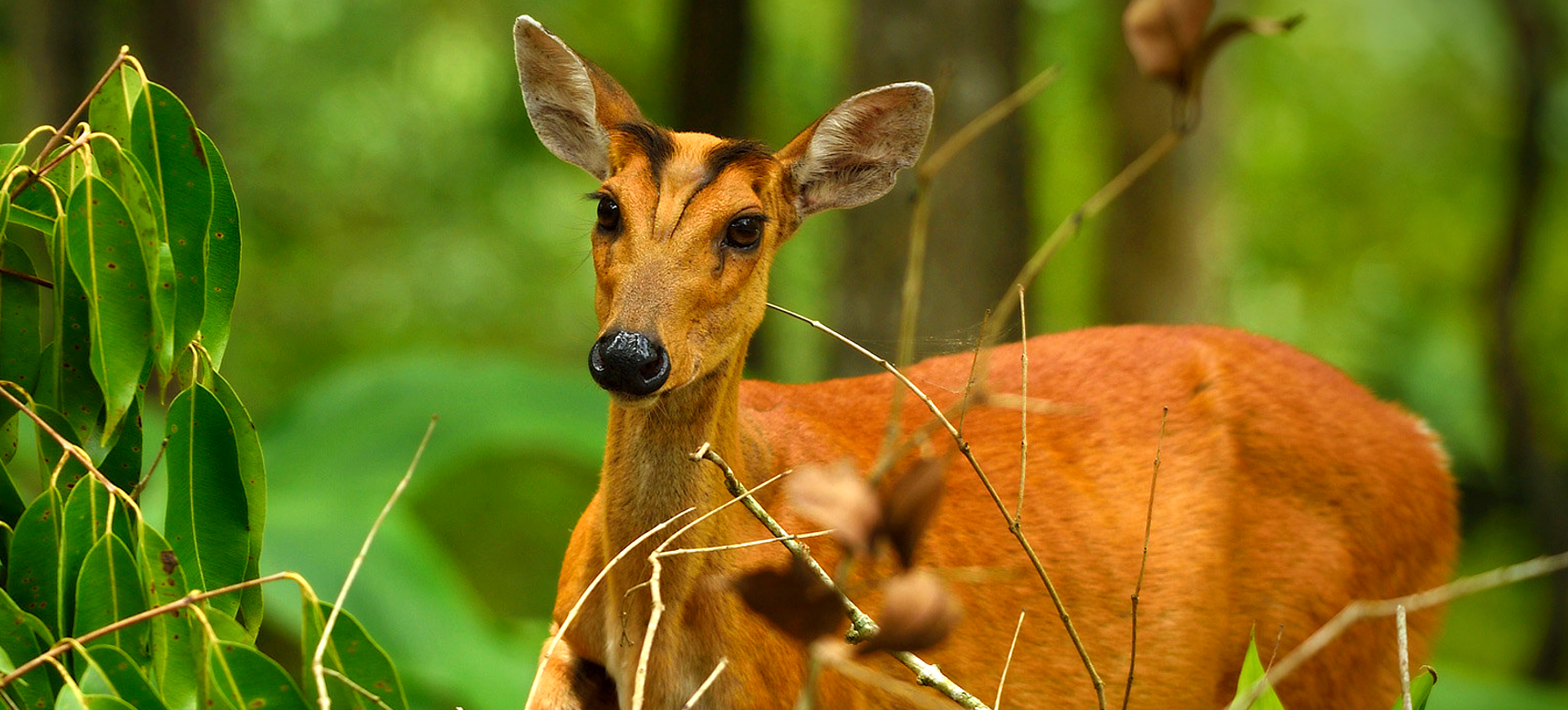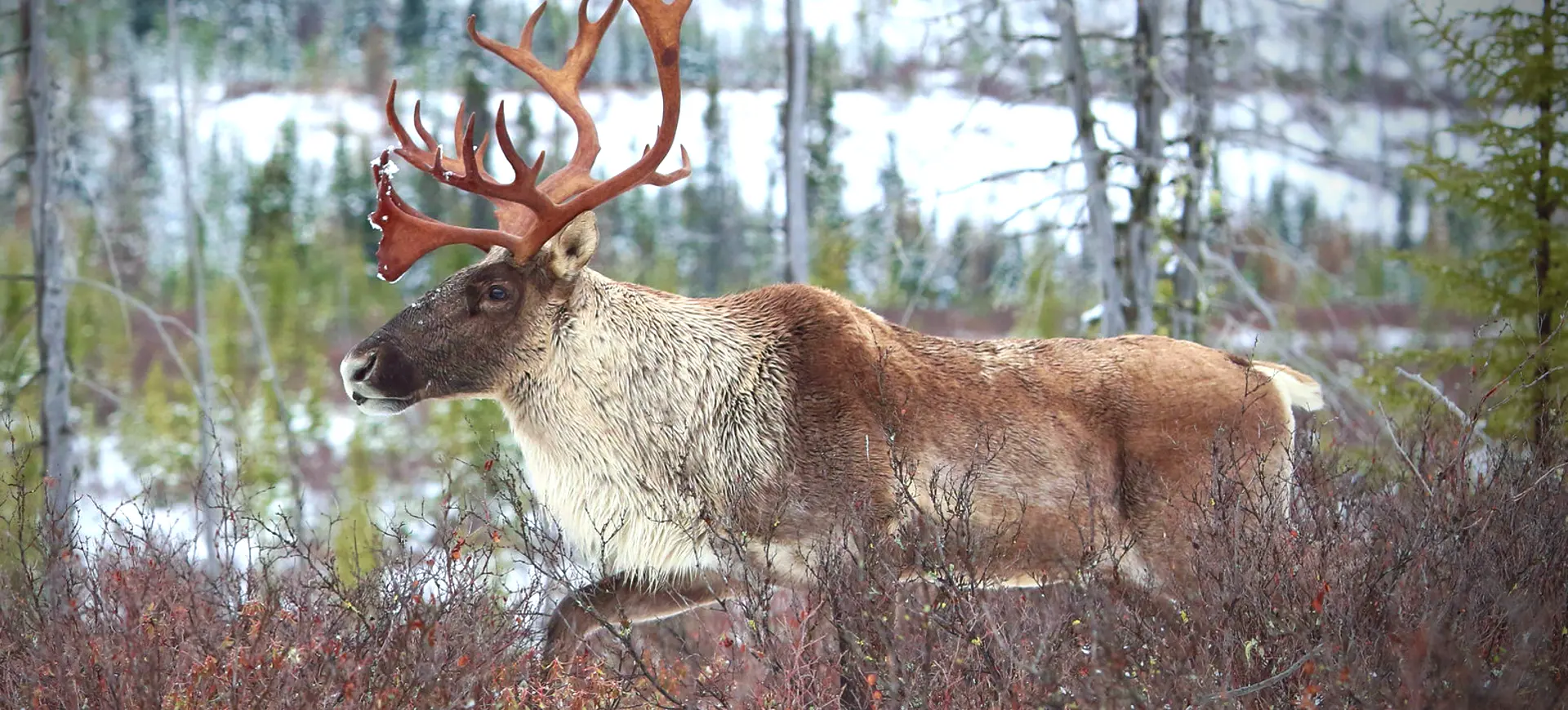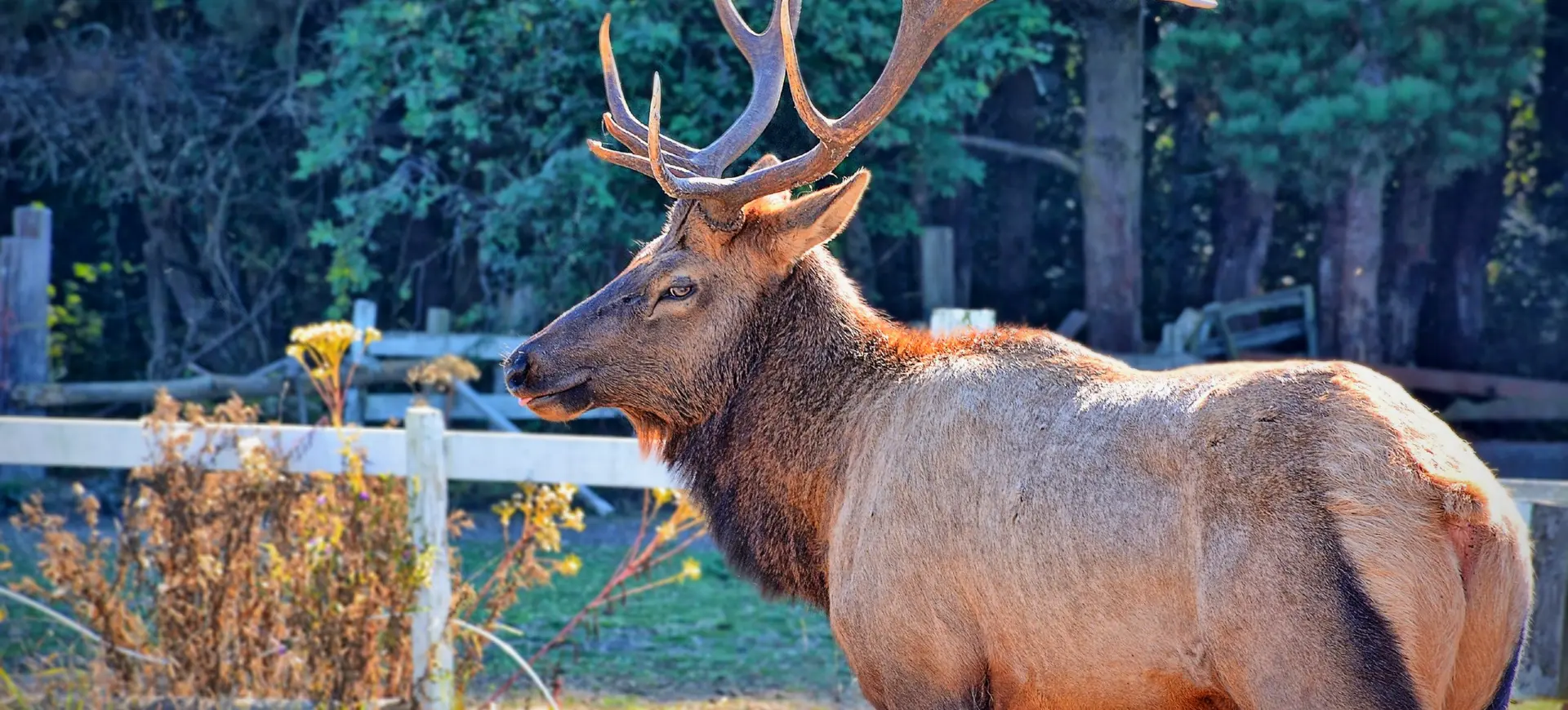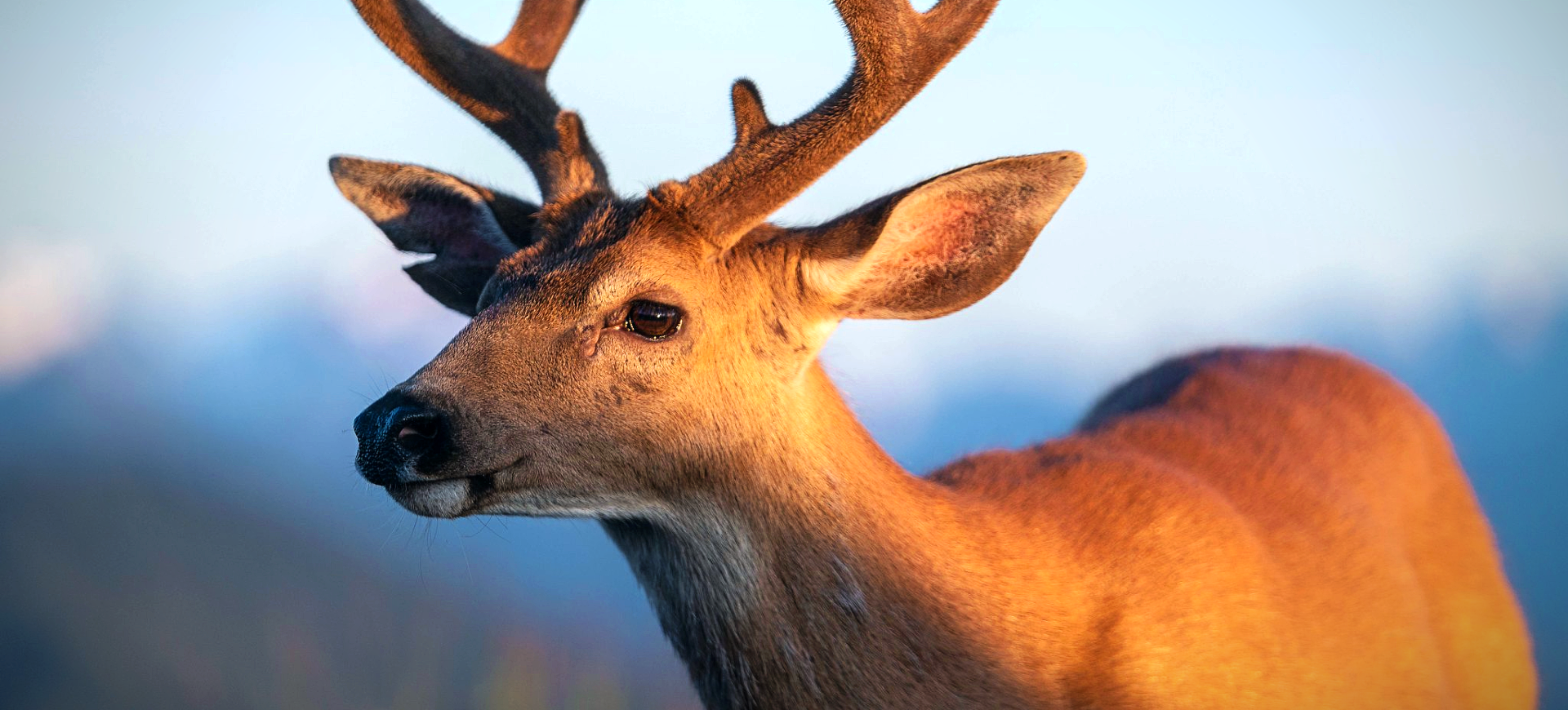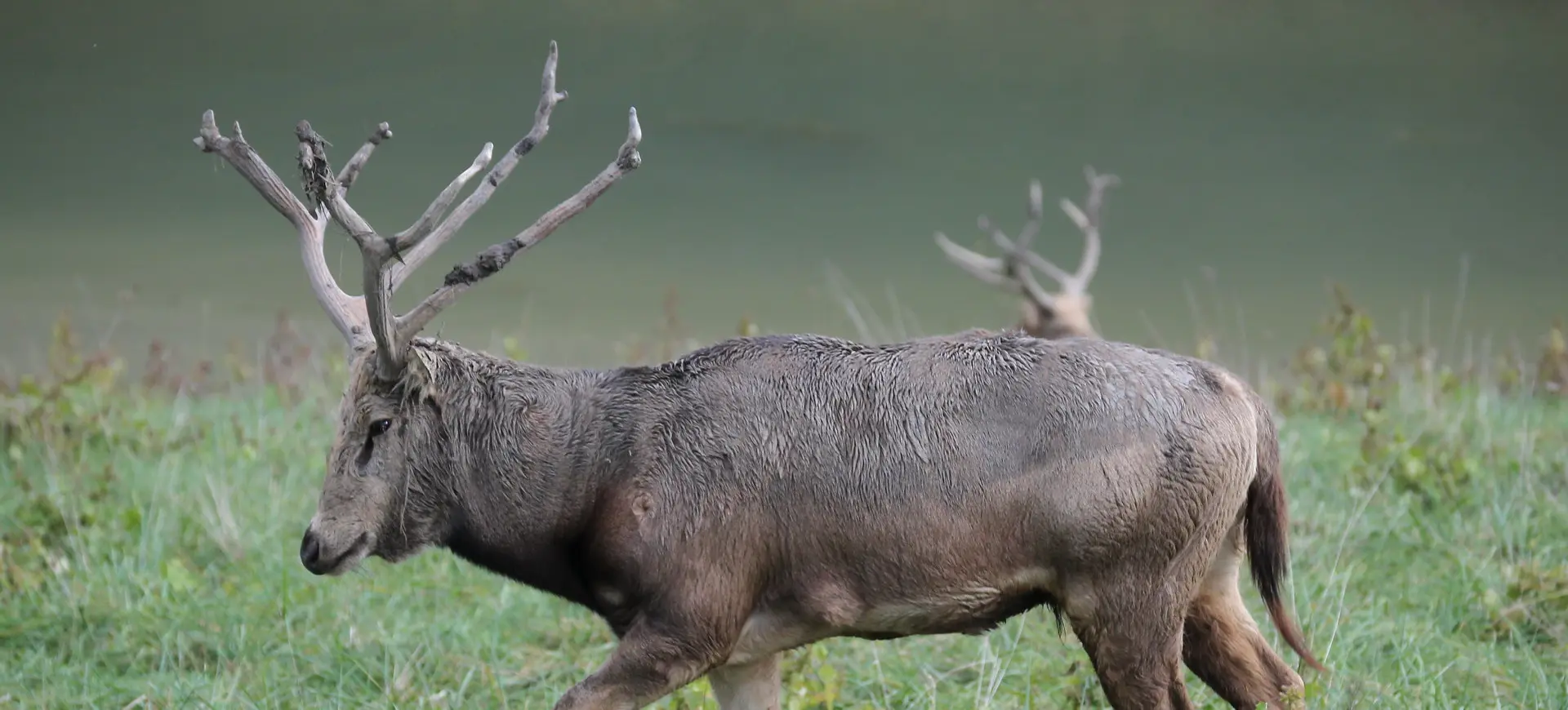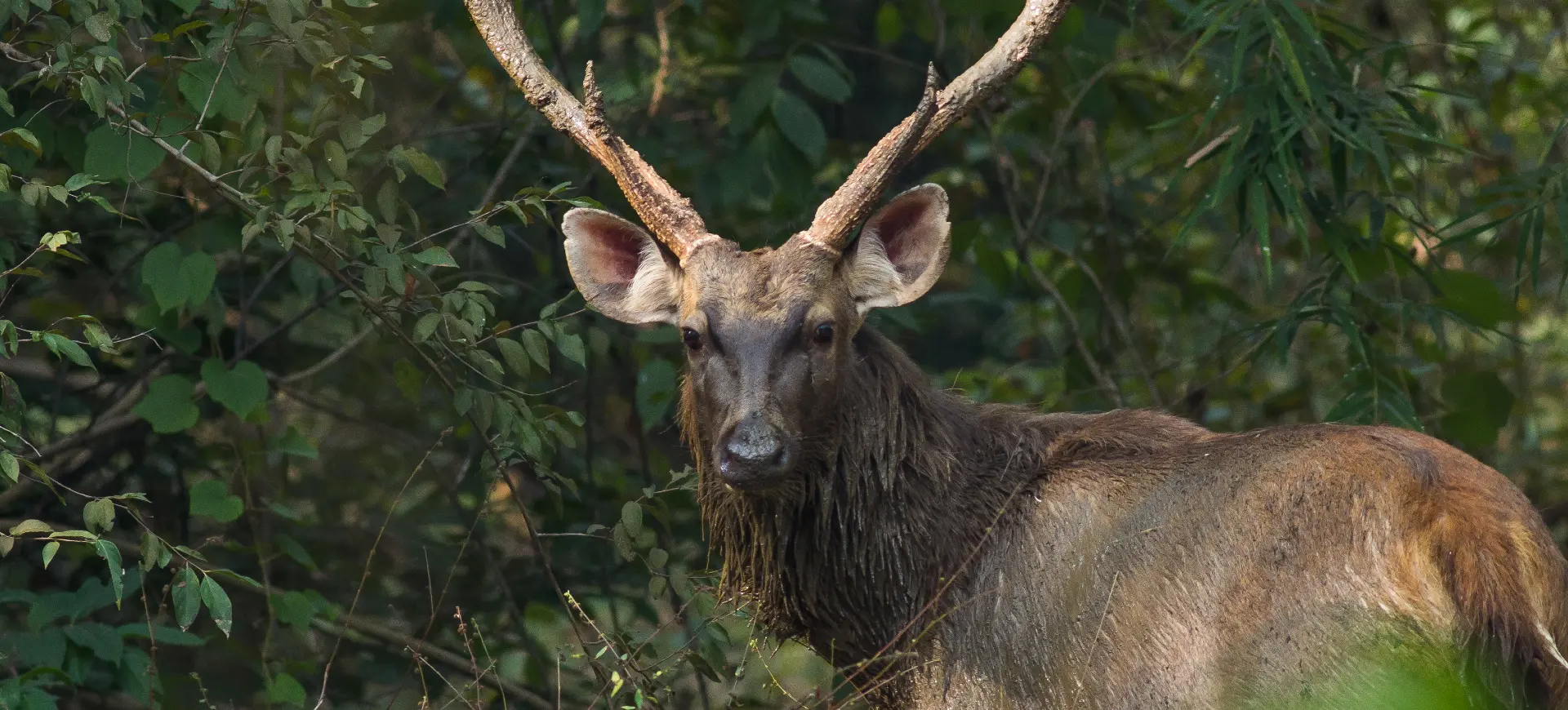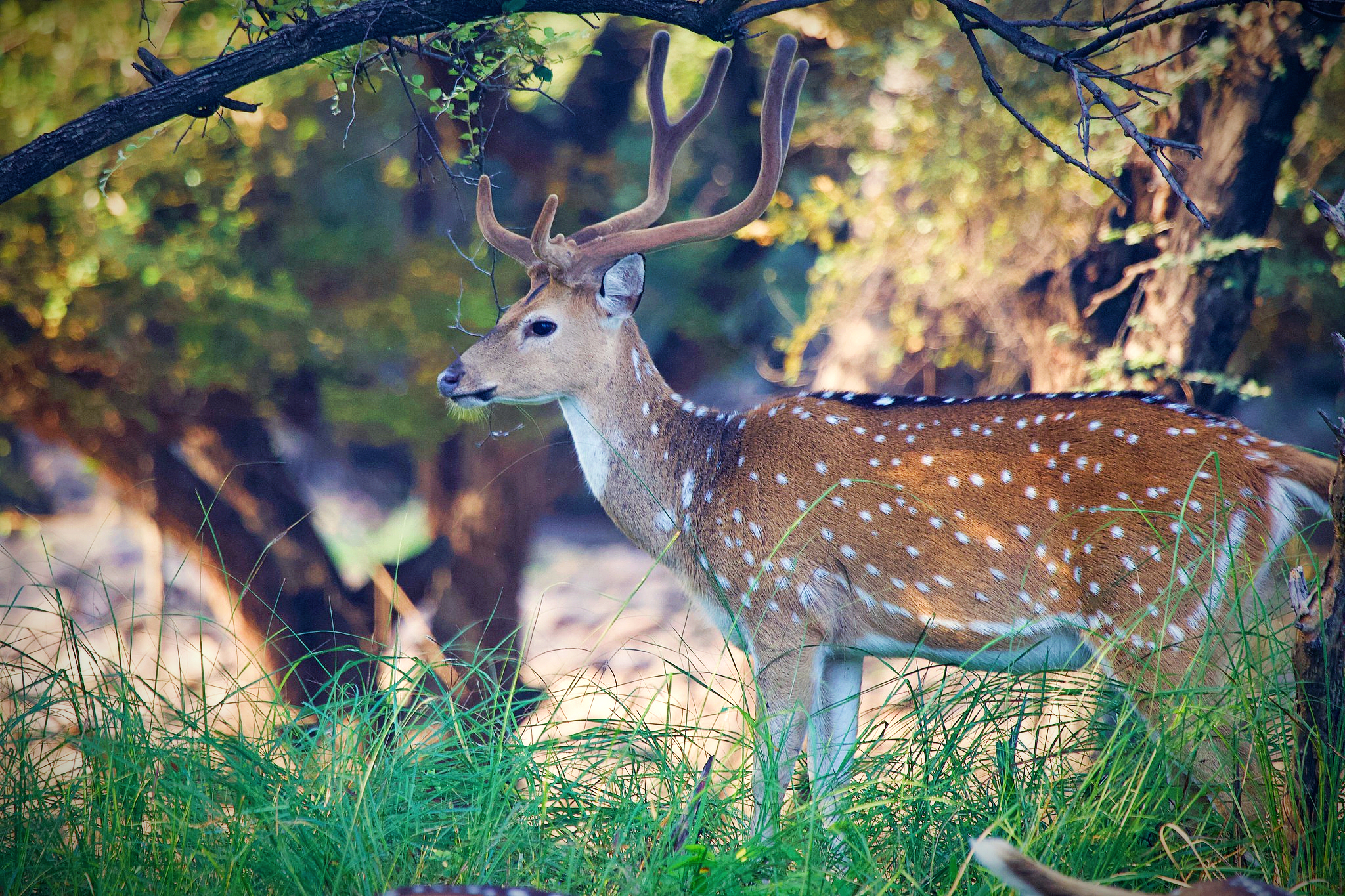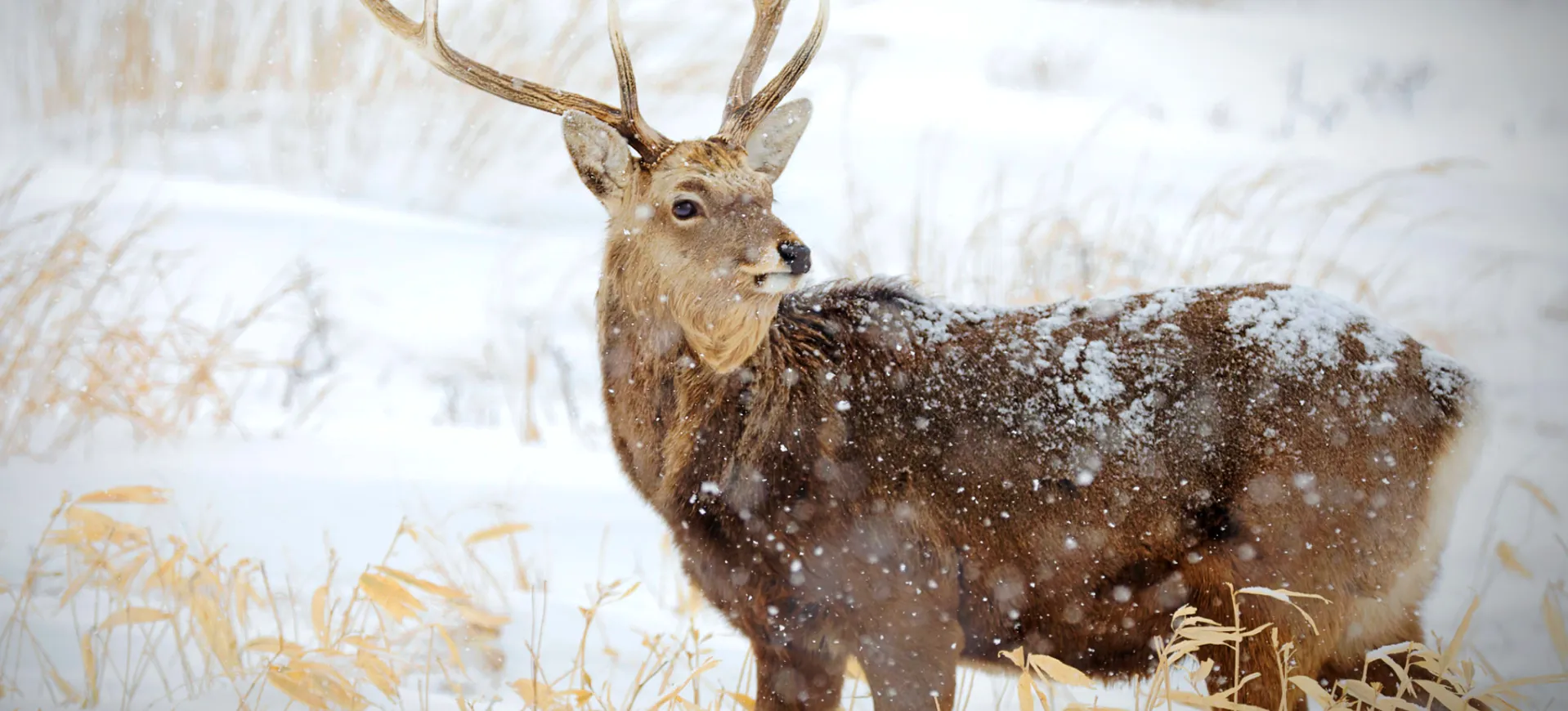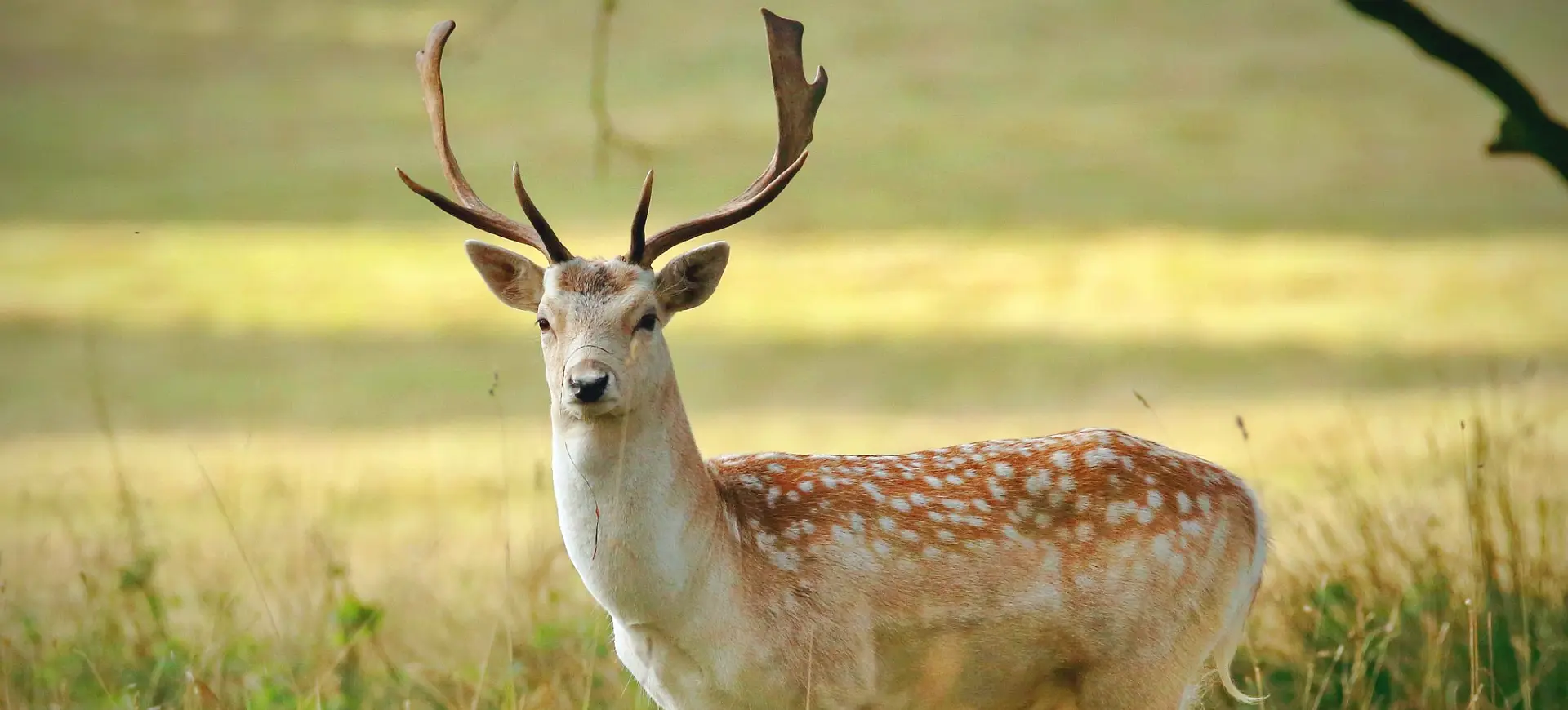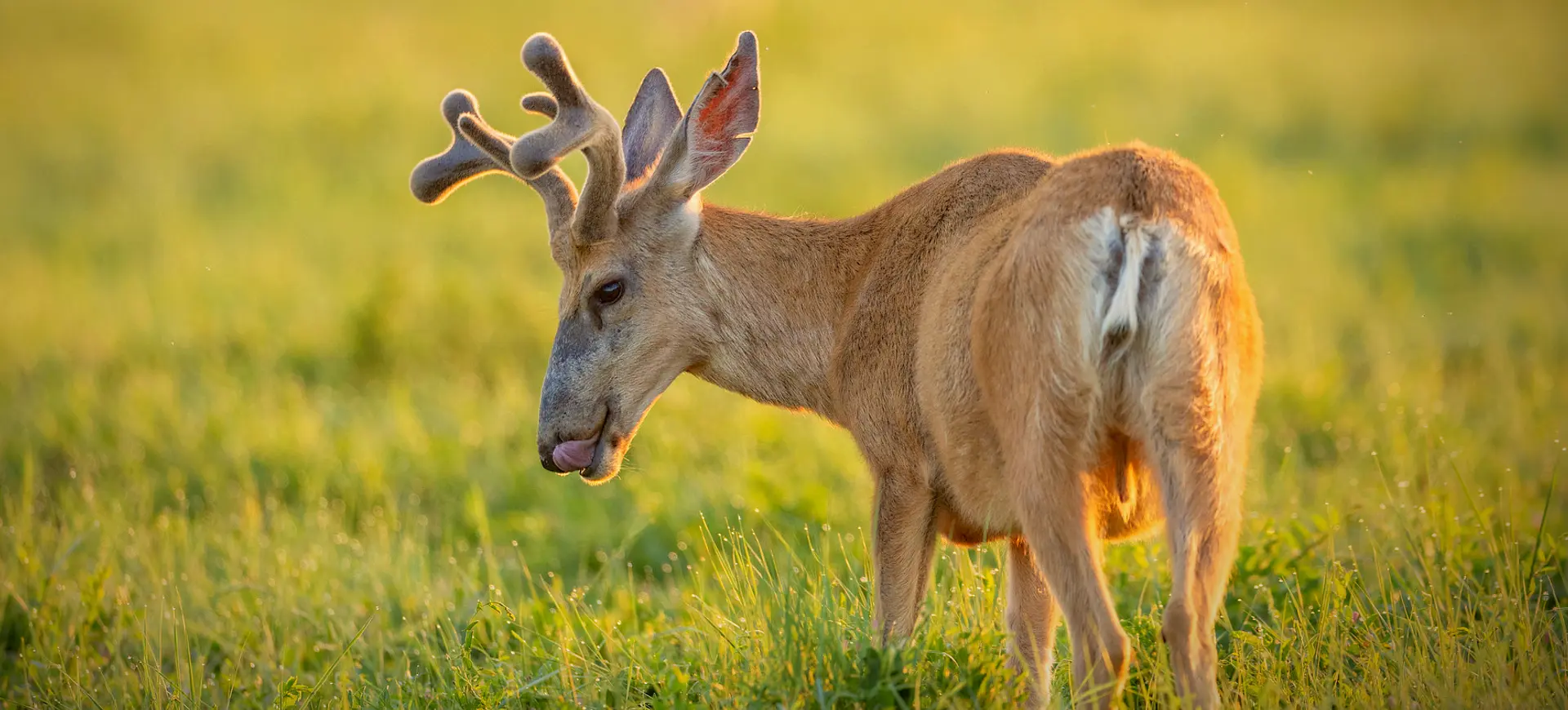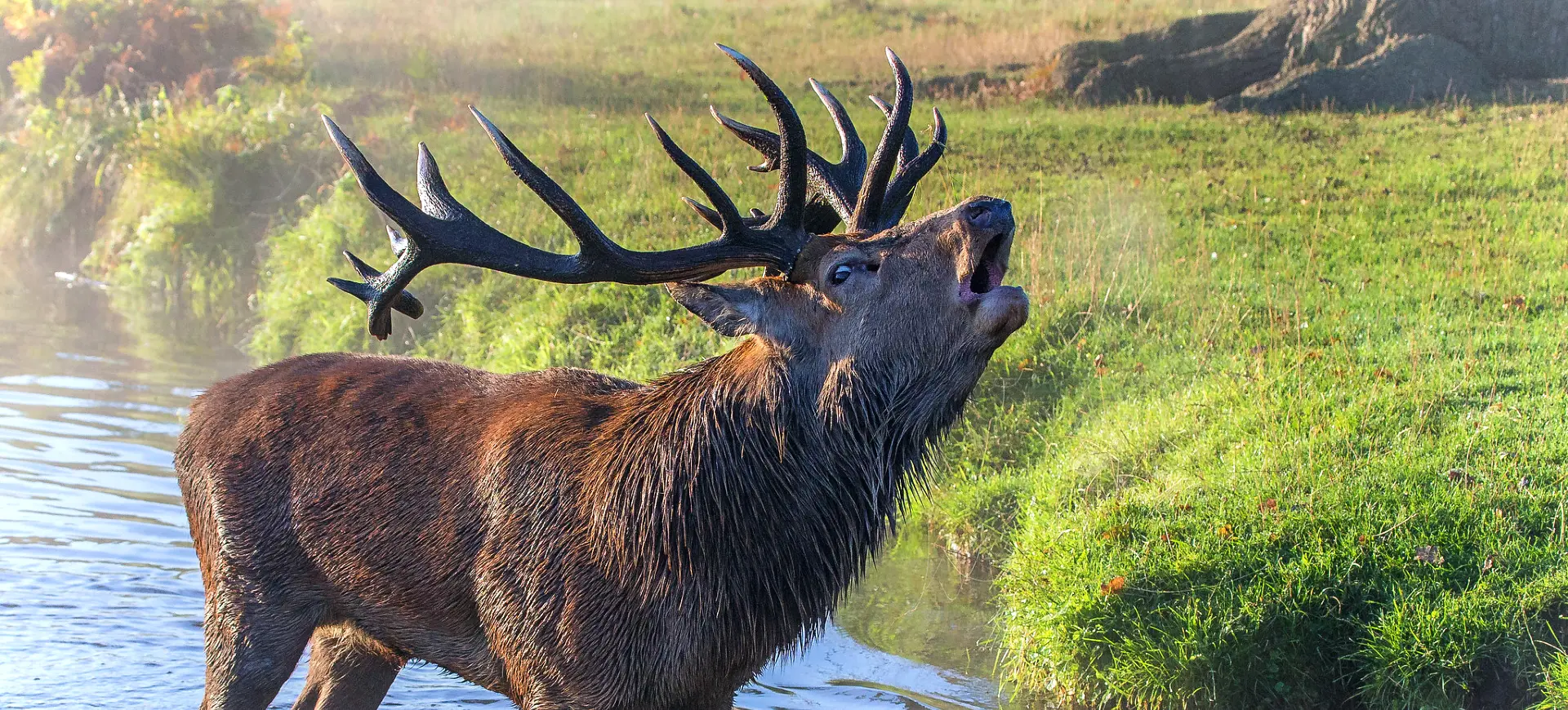Overview
The barasingha (Rucervus duvaucelii), also known as the swamp deer, is a large deer species native to the Indian subcontinent. It is named after its distinctive antlers, which can have up to 12 or more times, giving it the name “barasingha,” meaning “twelve-tined” in Hindi. This herbivorous mammal is primarily found in marshes, wetlands, and grasslands, where its long legs and hooves are well-suited for traversing swampy terrain. The species is known for its elegant appearance, social behavior, and its critical role as a grazer in maintaining grassland ecosystems.
Barasingha is a social species that lives in herds, typically consisting of females, their young, and a dominant male. During the rutting season, males compete for dominance and access to females through vocal displays and antler clashes. Barasingha is highly dependent on wetland habitats, unlike many other deer species, making it particularly vulnerable to habitat loss and degradation. Due to hunting and habitat destruction, the species experienced severe population declines, but successful conservation efforts have helped stabilize and recover some populations.
Barasingha is currently classified as Vulnerable on the IUCN Red List. Three recognized subspecies are found in different regions of India and Nepal. The species is a flagship for wetland and grassland conservation in its range, and its protection is critical for preserving biodiversity. Conservation initiatives, including habitat restoration and the establishment of protected areas, have been instrumental in ensuring the survival of this majestic deer.
Taxonomy
Kingdom
Phylum
Class
Order
Family
Genus
Species
Type
Current distribution:
The barasingha's range is fragmented across northern and central India, southern Nepal, and northeastern India. Populations are concentrated in protected areas, such as Kanha National Park, Kaziranga National Park in India, and Chitwan National Park in Nepal. Historically widespread across the Indian subcontinent, their range has dramatically decreased due to habitat destruction and human activity. Today, isolated populations exist in pockets of suitable habitat, with the largest populations found in well-managed reserves.
Efforts to restore degraded grasslands and wetlands have allowed barasingha populations to recover in some areas. However, the species is still absent from large portions of its historical range, and connectivity between populations remains challenging. Translocation programs and habitat corridors are being developed to increase the species' range and genetic diversity. Despite these efforts, barasingha remains vulnerable to habitat loss, poaching, and human-wildlife conflict.
Physical Description:
The barasingha is a large and striking deer, measuring 3.9–4.6 feet (120–140 cm) at the shoulder and weighing between 300–375 pounds (136–170 kg). Its golden-brown coat is thick and dense, with white spots that are more prominent in younger individuals and fade with age. Males are larger than females and are distinguished by their impressive antlers, which can reach lengths of up to 40 inches (100 cm) and branch into 10–14 tines. These antlers are shed and regrown annually, becoming larger and more complex with age.
Barasingha has long, slender legs and broad hooves that are tell-adapted for walking through swampy terrain. Their large, dark eyes and elongated ears enhance their ability to detect predators, while their long tails aid communication within herds. During the breeding season, males develop a more robust neck and darker coat, making them stand out from females. Juveniles are smaller and lighter in color, with more prominent white markings that provide camouflage in grassy habitats.

Lifespan: Wild: ~15 Years || Captivity: ~20 Years

Weight: Male: 400-570 lbs (180-260 kg) || Female: 300-400 lbs (135-180 kg)

Length: Male: 70-78 in (180-200 cm) || Female: 65-70 in (165-178 cm)

Height: Male: 45-55 in (115-140 cm) || Female: 40-50 in (100-125 cm)

Top Speed: 30 mph (48 km/h)
Characteristic:
Native Habitat:
Barasingha are highly specialized and live in the wetlands, marshes, and tall grasslands of the Indian subcontinent. They are commonly found near rivers, lakes, and swampy areas, where the lush vegetation provides ample food and cover from predators. Their primary range includes regions in northern and central India, southern Nepal, and parts of northeastern India. Barasingha thrives in areas with tall grasses like Saccharum and Imperata, which offer both forage and concealment.
Each subspecies of barasingha has adapted to slightly different habitats. For example, the northern subspecies (R. d. duvaucelii) inhabits the floodplain grasslands of Nepal and the Brahmaputra Valle. In contrast,dia, while the central Indian subspecies (R. d. branderi), is found in the dry deciduous forests and grasslands of Madhya Pradesh. The western subspecies (R. d. ranjitsinhi) is restricted to the isolated swamps of southwestern Assam. Their dependence on wetlands and grasslands makes them highly susceptible to habitat degradation caused by agricultural expansion and drainage of wetlands.
Biomes:
Biogeographical Realms:
Continents:
Diet:
Diet & Feeding Habits:
Barasingha are herbivores and grazers. Their diet primarily consists of grasses, aquatic plants, sedges, and tender shoots. They feed on various grasses, including Saccharum, Imperata, and Cynodon, which are common in their wetland habitats. During the dry season, when fresh grasses are less abundant, they may supplement their diet with leaves, bark, and fallen fruits. Barasingha often forages during the cooler parts of the day, such as early morning and late afternoon, to avoid heat stress.
Their grazing behavior plays an important role in maintaining grassland ecosystems, as they prevent the overgrowth of vegetation and encourage new growth. Barasingha are water-dependent and require access to water bodies for both drinking and foraging on aquatic plants. In captivity, their diet is often supplemented with hay, vegetables, and mineral-rich pellets to ensure proper nutrition. The availability of nutritious forage is critical for their reproductive success and overall health, particularly for females during pregnancy and lactation.
Mating Behavior:
Mating Description:
The Barasingha has a polygamous mating system, where dominant males mate with multiple females. During the breeding season, males become territorial and display aggressive behaviors to establish dominance and attract females. They engage in loud calls and physical displays, including antlers wrestling with other males.
The breeding season usually occurs in the late monsoon and early winter months. After a gestation period of about 240 to 250 days, females give birth to a single fawn. The fawns are born well-developed and can stand and walk shortly after birth. The mother cares for the fawn for several months, often keeping it hidden in dense vegetation to protect it from predators.
Reproduction Season:
Birth Type:
Pregnancy Duration:
Female Name:
Male Name:
Baby Name:
Social Structure Description:
Barasinghas are social animals and typically form herds, which vary in size depending on the season and habitat. A dominant female usually leads the herds, consisting of females and their offspring. Adult males are generally solitary or form small bachelor groups, joining the herds only during the mating season.
Social interactions within the herd are important for survival, protecting against predators and facilitating access to food and water. Communication among Barasinghas involves vocalizations, body postures, and scent marking. The social structure of the herds, including the formation of bachelor groups and the role of dominant females, is a key aspect of their behavior and ecology.
Groups:
Conservation Status:
Population Trend:
The Barasingha is classified as Vulnerable by the IUCN, with a population trend that is currently stable but remains at risk. The primary threat to their survival is habitat loss due to agricultural expansion, urban development, and drainage of wetlands. Poaching remains a concern in some areas, although it has reduced significantly in protected areas.
Conservation efforts, including habitat restoration and anti-poaching measures, have stabilized some populations, particularly in national parks. However, the species’ future depends on the continued protection of its habitat and the mitigation of human-wildlife conflicts. The fragmented nature of their populations poses a challenge to genetic diversity and long-term survival.
Population Threats:
The major threats to the Barasingha include habitat loss and degradation, primarily due to the conversion of wetlands and grasslands for agriculture and development. Drainage of swamps and marshes for human use has significantly reduced the suitable habitat for this species. Poaching for meat and antlers, although decreased, still poses a risk in some areas.
Human-wildlife conflict is another challenge, as Barasinghas can cause crop damage, leading to conflicts with local communities. The isolation of populations due to habitat fragmentation increases their vulnerability to diseases and genetic inbreeding. Climate change and its impact on wetland ecosystems are additional concerns that could affect the species’ habitat and food sources.
Conservation Efforts:
The Barasingha’s conservation efforts focus on habitat protection and restoration, particularly in wetland and grassland ecosystems. Key conservation strategies include establishing and effectively managing protected areas where the deer are safe from hunting and habitat destruction. Anti-poaching patrols and enforcement of wildlife protection laws have been crucial in reducing illegal hunting.
Community involvement in conservation is essential, especially in areas where human-wildlife conflict occurs. Educational programs and sustainable livelihood projects help in building local support for conservation. Captive breeding programs have also been initiated to increase population numbers and maintain genetic diversity. International cooperation, particularly in transboundary conservation areas, is vital for the species’ long-term conservation.
Additional Resources:
Fun Facts
- The name ‘Barasingha’ translates to ‘twelve-tined’ in Hindi, referring to the number of antlers the males have.
- Barasinghas are excellent swimmers and can traverse deep water bodies in their swampy habitats.
- The species is known for its bugling call, especially prominent during the mating season.
- In the summer, Barasinghas shed their heavy winter coat for a lighter, more reddish one.
- They have a unique adaptation of elongated hooves that help them move in marshy lands.
- The Barasingha is the state animal of the Indian state of Madhya Pradesh.
- These deer have a strong maternal bond, with females fiercely protecting their young.
- Barasinghas play an important role in Hindu mythology and are often depicted in ancient Indian art.
- Conservation efforts have successfully revived the species from the brink of extinction in certain areas.
- The antlers of the Barasingha are among the most sought-after by collectors and wildlife enthusiasts.


